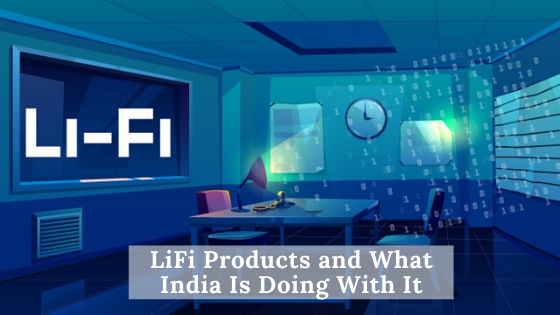One of the main issues with the current and very popular WiFi technology is that the internet speed is very low and the other major issue is its Security vulnerabilities. A relatively new technology that has carved a niche for itself in the market is light fidelity technology which uses light waves, rather than radio waves used by WiFi, to transmit the data between the receiver and the transmitter. Experts predict that the speed of the LiFi technology would be 100 times faster than WiFi as the visible light spectrum is 10,000 times larger than radio waves.
However, as we can see, there is a buzz about LiFi technology except for India and we will try to understand the reasons for the same.
Except that LiFi technology can offer splendid internet speed, it is also relatively cost-effective than WiFi technology. All you need is a series of LED bulbs and a router to get started. In addition to that, LiFi technology is also more secure and safe than WiFi technology as light cannot pass through walls.
When we talk about India, Wipro Lighting had partnered with pureLiFi, a pioneer global leader in LiFi technology, about two years ago. However, the collaboration failed to see any commercial light with LiFi in India. What might be possible reasons for that? Vineet Agrawal, CEO of Wipro Consumer Care and Lighting explains to us that one of the major issues of LiFi technology is that when there is no light, you cannot connect with the internet.
However, he also added that in recent times, the use of LiFi technology will increase in many sectors including banking, insurance, and others, especially when there is a huge need for data privacy. One of the core reasons to use LiFi technology is that it is very difficult to hack the data as light cannot pass through the walls and it makes the light fidelity technology more secure and reliable.
Also, he pointed out that the cost is also another department that requires special attention. For example, a 9W Wipro WiFi-enabled Smart bulb costs Rs. 2099, while a standard 9W Wipro LED bulb costs only Rs. 240.
The light fidelity technology was first coined by Professor Harald Haas, a professor at the University of Edinburgh and a founder and chief scientist of pureLiFi. As per the Global Market Insights, the total LiFi global market will reach $75 billion by 2023.
The IT ministry has conducted a joint pilot test with the Indian Institute of Technology- Madras and Philips India, a prominent lighting company and the results of the test were satisfactory and successful. The test was done by using LED bulbs and light spectrum to transmit data and was a successful attempt. The light fidelity technology will be used by the government of India to reach out and cover those areas that cannot be covered by the existing fibre network.
However, many areas need out attention to make light fidelity technology more common and acceptable as WiFi. Cost is one thing that we discussed above and the hurdle is the system’s inability to penetrate hard objects. For uninterrupted internet connection, a clear line of sight for signal transmission is needed.
Conclusion
Keeping these temporary hurdles aside, there is no doubt that the LiFi technology is here to stay and will be a permanent solution to ever-increasing demands of the high-speed and secure internet. India is still developing commercially viable LiFi solutions, but it would still take some time to reach to where it should be.
